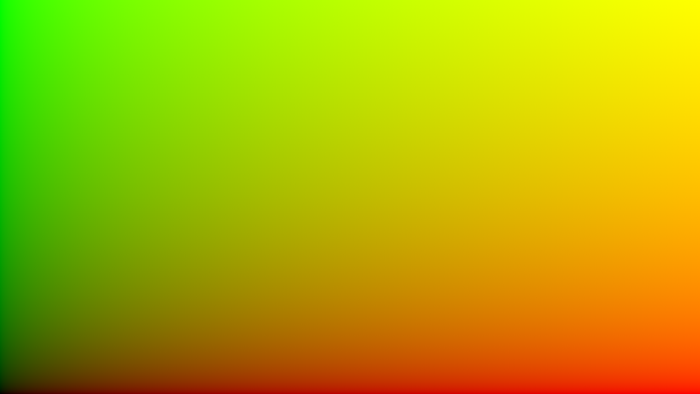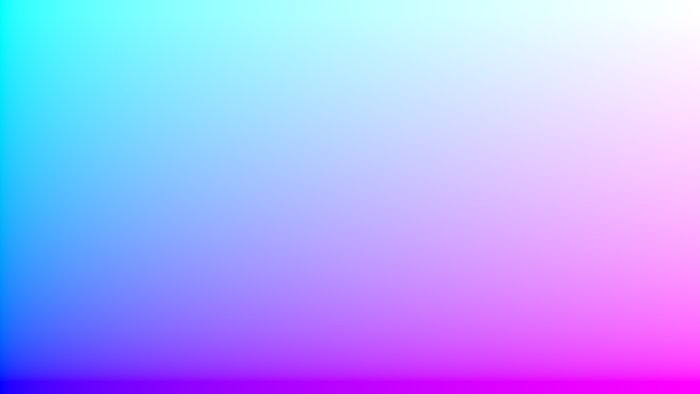




3Dprinting (179) A.I. (898) animation (353) blender (217) colour (241) commercials (53) composition (154) cool (368) design (657) Featured (91) hardware (316) IOS (109) jokes (140) lighting (300) modeling (156) music (189) photogrammetry (197) photography (757) production (1308) python (101) quotes (498) reference (317) software (1379) trailers (308) ves (571) VR (221)
POPULAR SEARCHES unreal | pipeline | virtual production | free | learn | photoshop | 360 | macro | google | nvidia | resolution | open source | hdri | real-time | photography basics | nuke
Category: software
-
Python NumPy: the absolute basics for beginners
https://numpy.org/doc/stable/user/absolute_beginners.html
NumPy (Numerical Python) is an open source Python library that’s used in almost every field of science and engineering. It’s the universal standard for working with numerical data in Python, and it’s at the core of the scientific Python and PyData ecosystems. NumPy users include everyone from beginning coders to experienced researchers doing state-of-the-art scientific and industrial research and development. The NumPy API is used extensively in Pandas, SciPy, Matplotlib, scikit-learn, scikit-image and most other data science and scientific Python packages.
The NumPy library contains multidimensional array and matrix data structures (you’ll find more information about this in later sections). It provides ndarray, a homogeneous n-dimensional array object, with methods to efficiently operate on it. NumPy can be used to perform a wide variety of mathematical operations on arrays. It adds powerful data structures to Python that guarantee efficient calculations with arrays and matrices and it supplies an enormous library of high-level mathematical functions that operate on these arrays and matrices.
-
freecodecamp.org – Introduction to Linux
Linux Shell Script and Command Line for Beginners
Full course
https://www.freecodecamp.org/news/introduction-to-linux
-
A short 170 year history of Neural Radiance Fields (NeRF), Holograms, and Light Fields
https://neuralradiancefields.io/history-of-neural-radiance-fields/
“Lightfield and hologram capture started with a big theoretical idea 115 years ago and we have struggled to make them viable ever since. Neural Radiance fields aka NeRF along with gaming computers now for the first time provide a promising easy and low cost way for everybody to capture and display lightfields.”
“Neural Radiance fields (NeRF) recently had its third birthday but the technology is just the latest answer to a question people have been chasing since the 1860s: How do you capture and recreate space (from images)?”
“The plenoptic function measures physical light properties at every point in space and it describes how light transport occurs throughout a 3D volume.”
Google project Starline the latest in real time and compression image to 3D technology
-
Fast, optimized ‘for’ pixel loops with OpenCV and Python to create tone mapped HDR images
https://pyimagesearch.com/2017/08/28/fast-optimized-for-pixel-loops-with-opencv-and-python/
https://learnopencv.com/exposure-fusion-using-opencv-cpp-python/
Exposure Fusion is a method for combining images taken with different exposure settings into one image that looks like a tone mapped High Dynamic Range (HDR) image.
-
Ben McEwan – Demystifying ST Maps
An ST map is an image where every pixel has a unique Red and Green colour value that corresponds to an X and Y coordinate in screen-space. You can use one to efficiently warp an image in Nuke.
In 3D you project the STMap against all the elements in the scene and render glass/transmittive elements on top of that.


-
mind-blowing ChatGPT extensions to use it anywhere
https://medium.com/geekculture/6-chatgpt-mind-blowing-extensions-to-use-it-anywhere-db6638640ec7
- Use ChatGPT anywhere — Google Chrome Extension https://github.com/gragland/chatgpt-chrome-extension
- Combining ChatGPT with search engines https://github.com/wong2/chatgpt-google-extension
- Using voice commands with ChatGTP https://chrome.google.com/webstore/detail/promptheus-converse-with/eipjdkbchadnamipponehljdnflolfki
- Integrating ChatGPT in Telegram and Whatsapp https://github.com/altryne/chatGPT-telegram-bot/
- Integrating ChatGPT in Google Docs or Microsoft Word https://github.com/cesarhuret/docGPT
- Save everything you have generated in ChatGPT https://github.com/liady/ChatGPT-pdf
- ChatGPT Writer: It uses ChatGPT/ATLAS to generate emails or replies based on your prompt https://chrome.google.com/webstore/detail/chatgpt-writer-write-mail/pdnenlnelpdomajfejgapbdpmjkfpjkp/related
- WebChatGPT gives you relevant results from the web https://chrome.google.com/webstore/detail/webchatgpt-chatgpt-with-i/lpfemeioodjbpieminkklglpmhlngfcn
- YouTube Summary with ChatGPT/ATLAS https://chrome.google.com/webstore/detail/youtube-summary-with-chat/nmmicjeknamkfloonkhhcjmomieiodli/related
- TweetGPT: It uses ChatGPT/ATLAS to write your tweets, reply, comment https://github.com/yaroslav-n/tweetGPT
-
freecodecamp.org – Python Automation Scripts
https://www.freecodecamp.org/news/python-automation-scripts/
- Automate Python Proofreading
- Automate Playing Random Music
- Automatic PDF to CSV Converter
- Automatic Photo Compressor
- Automatic YouTube Video Downloader
- Automatic Text to Speech
- Automatically Convert Images to PDF
- Automatic Plagiarism Checker
- Make URLs Shorter
- Internet Speed Tester
-
rayshader – open source tool for producing 2D and 3D data visualizations
rayshader is an open source package for producing 2D and 3D data visualizations in R. rayshader uses elevation data in a base R matrix and a combination of raytracing, hillshading algorithms, and overlays to generate stunning 2D and 3D maps. In addition to maps, rayshader also allows the user to translate ggplot2 objects into beautiful 3D data visualizations.
The models can be rotated and examined interactively or the camera movement can be scripted to create animations. Scenes can also be rendered using a high-quality pathtracer, rayrender. The user can also create a cinematic depth of field post-processing effect to direct the user’s focus to important regions in the figure. The 3D models can also be exported to a 3D-printable format with a built-in STL export function, and can be exported to an OBJ file.
-
Embree v4.0 – open source raytracing
High Performance Ray TracingIntel® Embree is a high-performance ray tracing library developed at Intel which supports x86 CPUs under Linux, macOS, and Windows; ARM CPUs on macOS; as well as Intel® Arc™ GPUs under Linux and Windows. Embree targets graphics application developers to improve the performance of photo-realistic rendering applications and is optimized towards production rendering. Embree is released as open source under the Apache 2.0 License
COLLECTIONS
| Featured AI
| Design And Composition
| Explore posts
POPULAR SEARCHES
unreal | pipeline | virtual production | free | learn | photoshop | 360 | macro | google | nvidia | resolution | open source | hdri | real-time | photography basics | nuke
FEATURED POSTS
-
Blender VideoDepthAI – Turn any video into 3D Animated Scenes
-
3D Gaussian Splatting step by step beginner course
-
Ethan Roffler interviews CG Supervisor Daniele Tosti
-
Embedding frame ranges into Quicktime movies with FFmpeg
-
What the Boeing 737 MAX’s crashes can teach us about production business – the effects of commoditisation
-
Top 3D Printing Website Resources
-
Alejandro Villabón and Rafał Kaniewski – Recover Highlights With 8-Bit to High Dynamic Range Half Float Copycat – Nuke
-
Jesse Zumstein – Jobs in games
Social Links
DISCLAIMER – Links and images on this website may be protected by the respective owners’ copyright. All data submitted by users through this site shall be treated as freely available to share.
